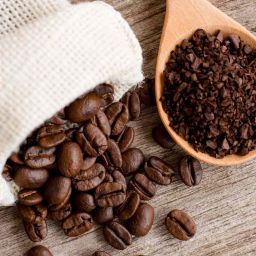
Mexican coffee, distinguished by its unique characteristics and reputation, stands as a testament to the country’s rich coffee culture. The beans, primarily grown in regions like Chiapas, Oaxaca, and Veracruz, contribute significantly to Mexico’s status in the global coffee arena.
These areas, blessed with optimal coffee-growing conditions, produce beans that are celebrated for their delicate balance of flavors and aromas. The significance of these regions cannot be overstated, as they provide the diverse geographical landscapes necessary for cultivating the distinct varieties of Mexican coffee beans that are cherished worldwide.
Regions Producing the Best Mexican Coffee
The heart of Mexican coffee production lies within three primary regions: Chiapas, Oaxaca, and Veracruz. Each region brings something unique to the coffee table, influencing the beans’ flavor profiles and quality.
- Chiapas: This region is renowned for its high-altitude coffee, contributing to a rich and complex flavor profile with hints of chocolate, nuts, and citrus. The cool climate and fertile volcanic soil of the Sierra Madre mountains create an ideal environment for growing high-quality beans.
- Oaxaca: Home to the unique Pluma Hidalgo variety, Oaxaca’s coffee is known for its sweet beans with fruity notes and a creamy body. The small-scale, artisanal approach to coffee production in this region allows for meticulous attention to quality.
- Veracruz: Sitting along the Gulf of Mexico, Veracruz produces coffee that often features a mild flavor profile with subtle sweetness and acidity, contributing to the diversity of Mexican coffee flavors.
Characteristics and Flavor Profiles
Mexican coffee beans are celebrated for their light to medium acidity, offering a pleasant taste that appeals to a wide range of palates. The flavor profiles of these beans can range from chocolatey and nutty to sweet and fruity, depending on the region and the specific conditions in which the beans were grown.
The diversity in flavor makes Mexican coffee a versatile choice, capable of satisfying a variety of taste preferences. This versatility is a hallmark of Mexican coffee, reflecting the rich cultural and geographical diversity of the regions where these beans are cultivated.
Criteria for Selecting the Best Beans
When choosing Mexican coffee beans, several key factors ensure the selection of the best quality. Freshness is paramount; freshly roasted beans offer the most vibrant flavors and aromas. Organic certification is another crucial criterion, as it indicates that the beans were grown without synthetic fertilizers or pesticides, preserving the natural qualities of the coffee and benefiting the environment.
Additionally, beans’ specific regional origins play a significant role in their flavor profiles. Coffee from Chiapas, Oaxaca, and Veracruz, for example, has distinct characteristics influenced by the unique soil and climate conditions of each region. Prioritizing these factors can significantly enhance your coffee experience.
Top Recommended Mexican Coffee Brands
Among the plethora of brands offering Mexican coffee, Volcanica Coffee Company, Fresh Roasted Coffee, and Dancing Moon stand out for their commitment to quality and sustainability. Volcanica Coffee Company is known for its exceptional Mexican Reserve Coffee, sourced from the Chiapas region, offering a rich, heavy body and syrupy flavor, ideal for cold brew or latte due to its low acidity.
Fresh Roasted Coffee presents a variety of Mexican beans, including organic options that emphasize the distinct flavors and smoothness of the region’s produce. Dancing Moon Coffee, on the other hand, offers a smooth, dark roast Chiapas coffee, appreciated for its whole bean versatility and rich flavor, albeit at a higher price point.
Best Brew Methods for Mexican Beans
The method of brewing significantly affects the final taste of the coffee. For Mexican beans, methods like pour-over, French press, and cold brew are highly recommended to fully capture the essence of the beans’ flavor profile. The pour-over method is ideal for highlighting the subtle nuances of Mexican coffee, providing a clean and flavorful cup.
The French press, known for its rich and robust extraction, can enhance the body and depth of Mexican coffee, making it more pronounced. Cold brew, on the other hand, offers a smooth and mellow version of the coffee, with reduced acidity, making it a refreshing choice for warmer weather. Each method has its unique way of bringing out the best in Mexican coffee, catering to different preferences and occasions.
Mexican Coffee in the Global Market
Mexico’s journey in the coffee market began in the late 18th century, with coffee plants introduced by Spanish colonizers. However, it wasn’t until land disputes and government initiatives in the 19th and 20th centuries that coffee cultivation saw significant growth, particularly in regions like Chiapas, Oaxaca, and Veracruz. The Mexican Revolution and subsequent reforms provided a further boost, allowing small-scale farmers to flourish.
Despite challenges such as the dissolution of INMECAFE and the impact of international agreements, Mexican coffee has made a notable comeback through the efforts of cooperatives and a focus on specialty, organic, and fair-trade markets. Today, Mexican coffee is recognized globally for its quality and unique flavor profiles, contributing significantly to the world’s coffee culture.
FAQs
- What are the best brewing methods for Mexican coffee? Pour-over, French press, and cold brew methods are ideal for capturing the unique flavors of Mexican coffee.
- How should I store Mexican coffee beans? Keep them in a cool, dark place in an airtight container to preserve freshness.
- What are the differences between coffee from Chiapas, Oaxaca, and Veracruz? Chiapas coffee is known for its rich and complex flavors, Oaxaca for its sweet and fruity notes, and Veracruz for a milder profile with subtle sweetness and acidity.
Conclusion: Embracing Mexican Coffee
Mexican coffee, with its rich history and diverse regional profiles, plays a significant role in the global coffee scene. The regions of Chiapas, Oaxaca, and Veracruz, each with their unique climates and soils, produce coffees that are not only distinct but also embody the rich cultural heritage of Mexico. The selection of beans, understanding of brewing methods, and appreciation for the nuances of each region’s produce are crucial for enjoying Mexican coffee to its fullest.
The global appreciation for Mexican coffee continues to grow, thanks in part to the dedication of Mexican coffee farmers to sustainable and organic practices. This commitment has not only improved the quality of the coffee but also the livelihoods of the farmers and their communities.









